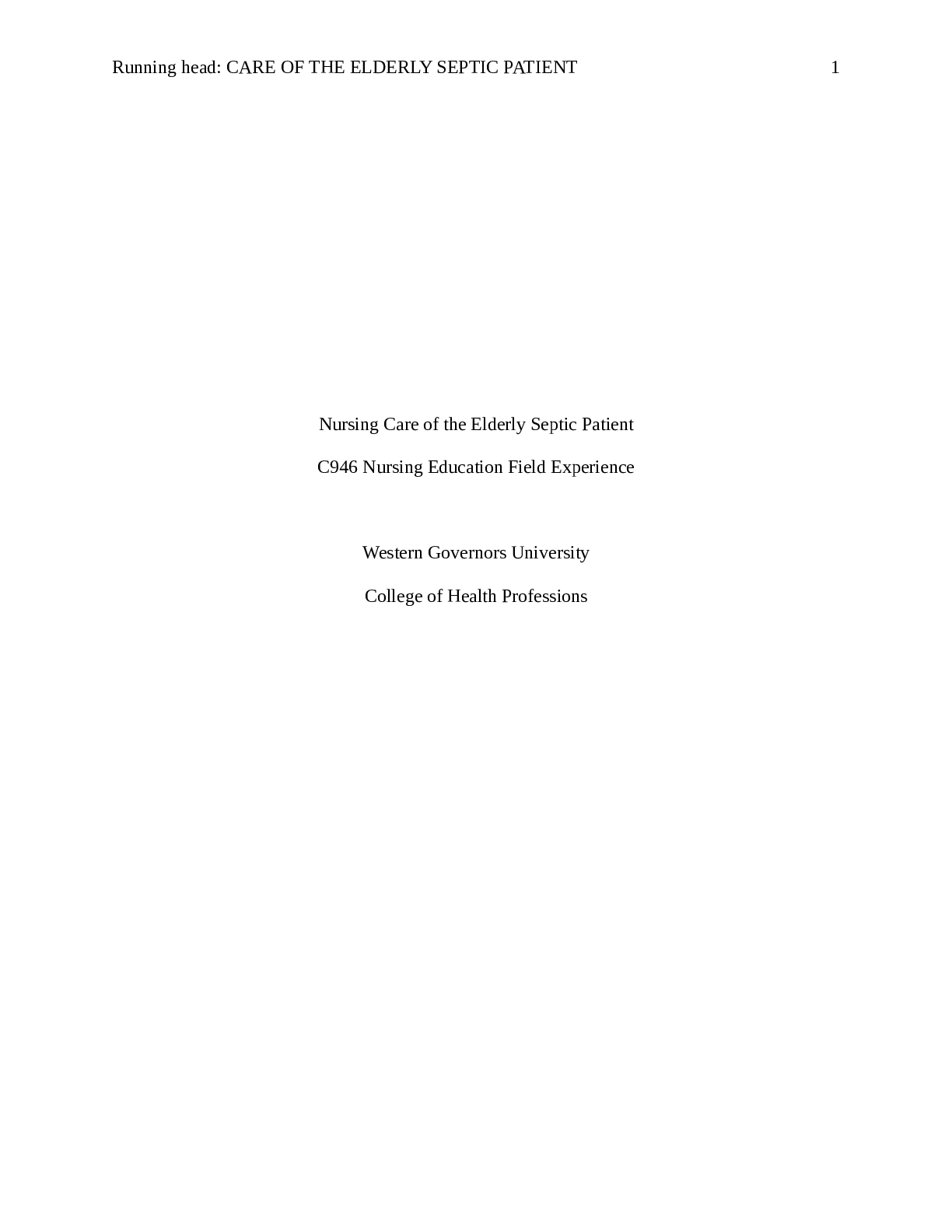CARE OF THE ELDERLY SEPTIC PATIENT
Nursing Care of the Elderly Septic Patient
According to the Center for Disease Control and Prevention (2019), approximately 1.7
million adult patients develop sepsis annually in the United States. Registered Nurses are at the
forefront of patient care and play a vital role in the early recognition and initiation of targeted
therapies related to sepsis management. Nurses are expected to practice autonomously to notice
subtle changes in patient conditions in all rapidly changing work environments to meet the
community’s healthcare needs. As such, pedagogical designs of instruction and nursing
education curricula profoundly influence and prepare learners for demanding clinical situations
necessitating a superior level of critical thinking, autonomy, and clinically sound reasoning and
decision making. Therefore, educating learners and incorporating sepsis early recognition and
interventions in nursing curricula serves to build confidence, competency, and better prepare
learners for clinical practice in sepsis identification and intervention.
The academic setting observed for this clinical practice experience was Governor’s
University School of Nursing. Governor’s University is a nationally ranked institute for higher
education which offers the traditional pre-licensure BSN track through terminal degrees in both
Doctor of Philosophy in Nursing and Doctor of Nursing Practice. Of particular interest for this
clinical practice experience is the RN-to-BSN program offered to licensed nurses with associate
degrees or nursing diplomas with a goal to obtain a BSN degree. Governor’s University provides
academic services to a very diverse student body, with more than 50-percent of learners enrolled
in the RN-to-BSN program are of the Asian-American, Pacific Islander, African American,
Native American, or Hispanic ethnic background.
In reviewing the syllabi for the RN-to-BSN program, a need gap analysis was performed,
and it was noted in the NUR421 Nursing Care of the Older Adult, that the curriculum did not
2
CARE OF THE ELDERLY SEPTIC PATIENT
include a module on Care of the Elderly Septic Patient. Although sepsis is a concept covered in
traditional undergraduate BSN studies, sepsis care is a prevalent malady affecting the elderly
population, which the Center for Disease Control and Prevention (2019) purports an annual
270,000 deaths per 1.7 million cases treated, and should be reviewed to encourage learners to
translate theory to practice at the baccalaureate level. Therefore, the purpose of the addition is a
reiteration of Care of the Elderly Septic Patient and will be an asset to the course and improve
the overall infrastructure of the nursing curricula in the RN-to-BSN program.
The theoretical framework or learning theory which underlies the proposal for this
clinical practice experience is the constructivist learning theory. Fernando & Marikar (2017),
assert that by employing the constructivist learning theory, learners actively and assiduously
obtain a new more profound working body of knowledge, by utilizing previously learned ideas
and concepts to build upon and construct new ideas. With the utilization of the constructivist
learning theory, nurse educators assist learners in drawing critical connections between
previously learned theoretical frameworks and build toward a deeper awareness of all material.
For example, sepsis care is typically covered in medical-surgical nursing, and learners will have
to recollect all previously learned nursing theories, assessments, and interventions in order to
excel in the Care of the Older Adult course. As such, learners are expected to analyze and
synthesize new information and make critical connections with previously learned information,
in order to create new a deeper understanding of sepsis care in their transitioning role to a
baccalaureate prepared nurse.
As previously discussed, the purpose of the proposal for this clinical practice experience
is to fulfill the curriculum gap within the Care of the Older Adult course to incorporate the Care
of the Elderly Septic Patient module. The rationale behind the curriculum change is to ensure the
Read More


